Post Intensive Landscapes – Mining Scapes
- Dipti Bhaindarkar
- Feb 17, 2019
- 4 min read
College Project | Semester 6 | 2018-19 | Batch A16
Mentor Team : Ravindra Punde, Dipti Bhaindarkar, Sabaa Giradkar, Vastavikta Bhagat
Post Intensive Landscapes – Mining Scapes
The Sixth Semester college project made enquiries in the contested mining region of Sonshi, a settlement located in the Pissurlem district of North Goa. The landscapes of resource extraction are in constant flux and they work with or compete to find a common ground. Thus the agglomerations situated in close proximities not only draw from them their sustenance but also struggle to cope up with environmental disturbances generated over time. The intent of this visit was to look beyond these terrains as landscapes of despair and abandonment, and reinvestigate them as landscapes in flux. This helped provide a lens to understand the movements undertaken and the methods and forms of informal habitation and sustenance that this form of vulnerable landscape generates.
The site has about 6 unoperational mines , it is also a locus where all anti-mining movements were initiated. This settlement houses majority of mine workers who are the natives (Gawda community) and also migrants from Jharkand , UttarPradesh, Tamil Nadu and other states.
The students ventured into the field for a period of five days to conduct four major enquiries,
What is the change in the landform and use of land – pre mining, during mining and post mining ?
What are the alterations in resources ?
What are the alterations in the flora and fauna, biodiversity and landscape depletion ?
What is the impact of the altered landscape on settlement, community and people?

The students negotiated the arguments for the above questions through extensive field study , interviews, oral narratives, drawings, primary and secondary surveys. Each investigation worked with three time periods – pre-mining /agrarian (before 1949), Mining (1949 – 2012) and Post Mining (2012- till present).
The first question prompted the students to conjecture the transformations in the landscape and landform, and to investigate the possible processes which were carried out during this established timeline. It looked at the impact of intensive resource extraction. It also questioned the need to extract intensively and the measures necessary for the process itself to be feasible for the landscape and subsequently the importance of bringing in a closure of the mines Overtime, Intensive mining attracted migrant truck drivers and changed the landscape of Sonshi from an agrarian- forest type to a gated community of truck drivers and networks. They further questioned the economic dependency of the community on mining that led the male residents to go out in search of newer sources of income post the mining ban . The village was/ being left with children playing and women working within their household.
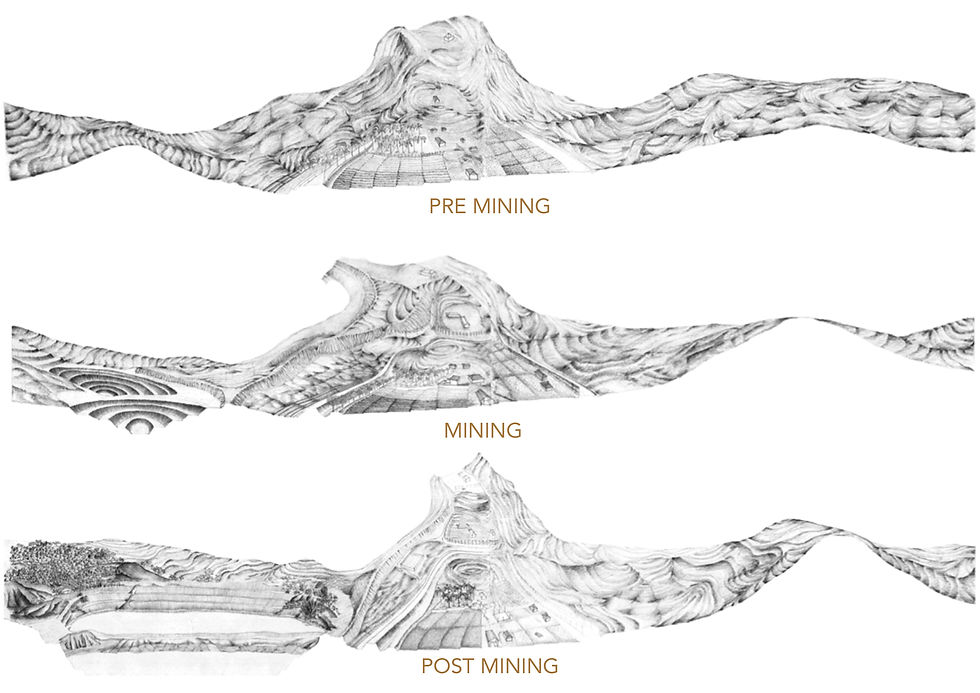
The second question documented the challenges of the human settlement in relation to the ecosystems in which they were embedded. The resources were not limited only to land and water but also to the aspects of commons. This also facilitated to understand the occupation dependencies. They studied how the alterations in the terrain started affecting the main water stream which originally started from the hillocks which are now mined out and supplied water to the villagers all around the year, which subsequently dried to become a nullah. There was a heavy depletion in the forested area which in turn affected the quality of air. The economic dependencies post mining started changing and hence the idea of commons has now dissolved. The boundary walls were built, leading to a clear division in the distribution of resources and the formation of segregated wados (clusters of houses) within the once tightly bound community.
With the dynamics of landforms and occupation change the biodiversity in the area saw a major shift. This laid out the foundation for the third question to understand how flora and fauna have transformed. The mining activities led to a depletion in flora and fauna, new biodiversities and life cycles that the altered landscape facilitated emerged in the region of Sonshi. The premining stage showcased heavy plantation of cashew trees, nachni farming, bamboo plantation, traces of rice, kokam, bajra which is now being replaced by plantations such as pineapple, chillies, cucumber, aloevera, drumstick and various flowering plants. The premining stage saw a lot of animal and marine aquatic life such as Tiger, Wild cats Gaur, Peacocks, Fox, Leopard, Monkeys, snakes,fishes which over the span of mining activities had gone missing. However, these species have now been rarely sighted within the now redundant landscape by the villagers the details of which was collected through oral narratives across the settlement.
The fourth and the final question lead to micro investigations of the impacts of altered landscape on the settlement, community and people. The students explored this landscape through the ideas of inversion, disruption and boundaries. With the change in landuse, the terrain saw a complete inversion from a mountainous terrain filled with forest to a working mine and further to an abandoned mining pit. The cultural and community engagements, festivities were disrupted over a period of time. The community which once used to act together now had created newer boundaries for themselves and led isolated lives. The new dynamics that emerged out of this landscape were further drawn and recorded by the students through understanding their social institutions and new typologies that emerged in the built fabric to accommodate a more diverse population of migrants.











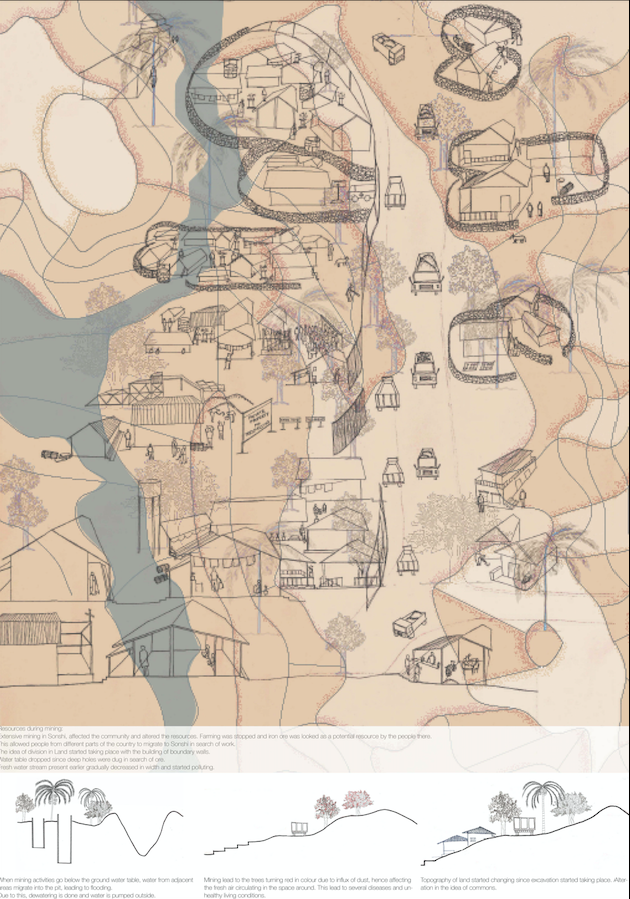

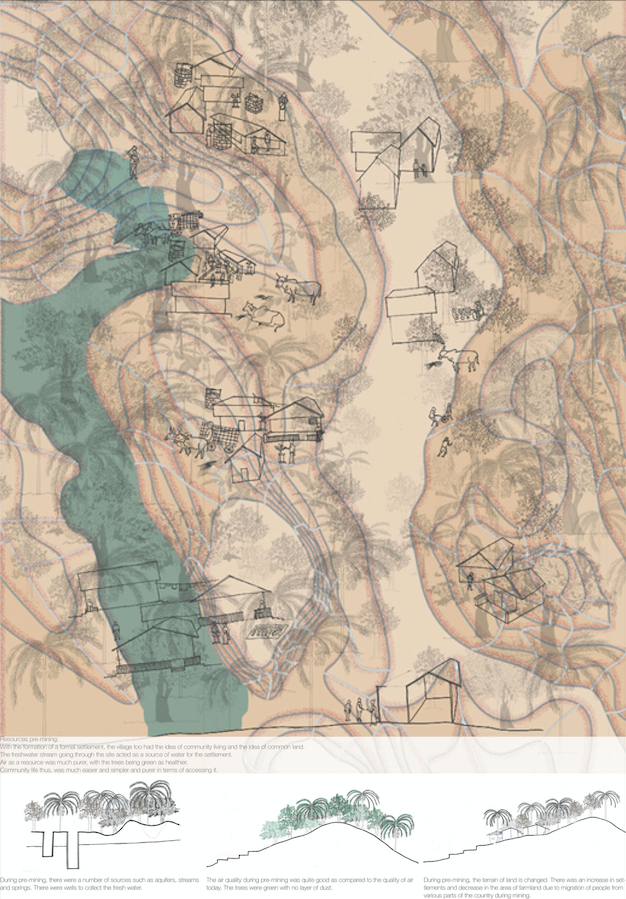

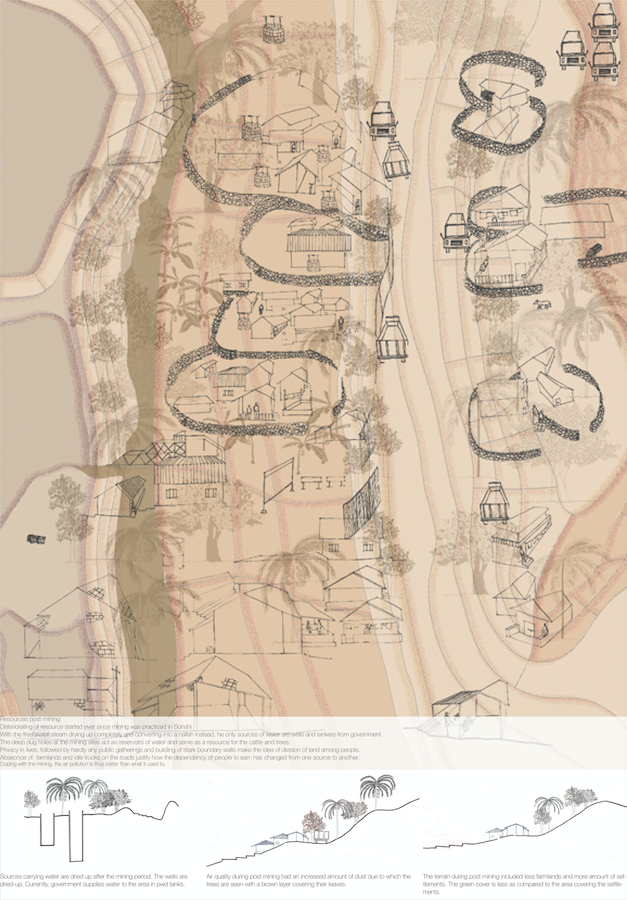

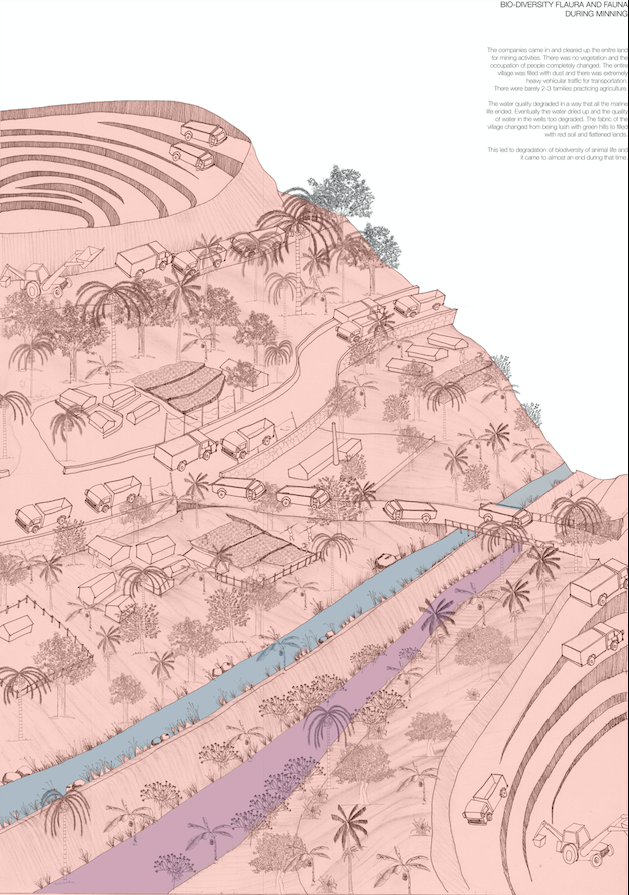

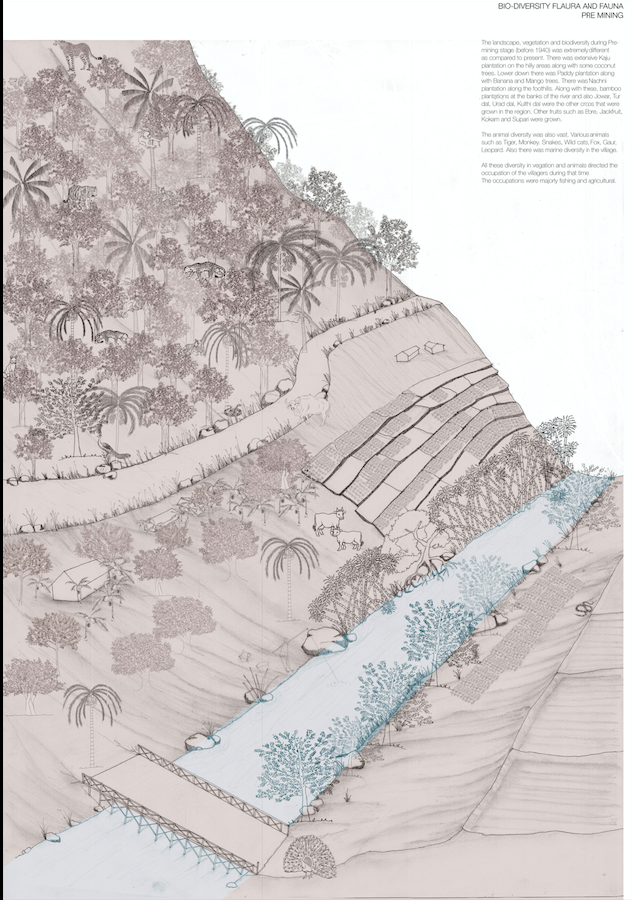

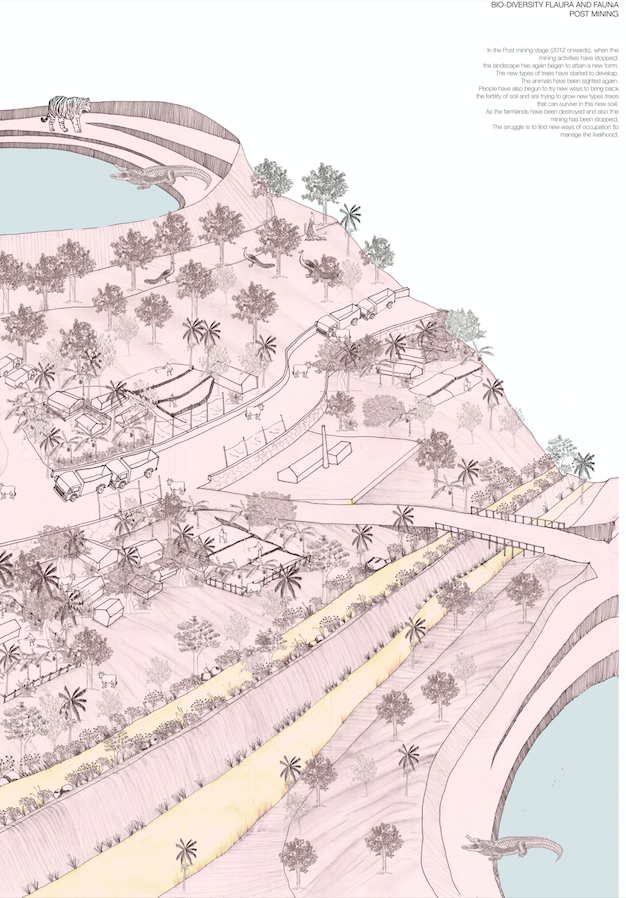

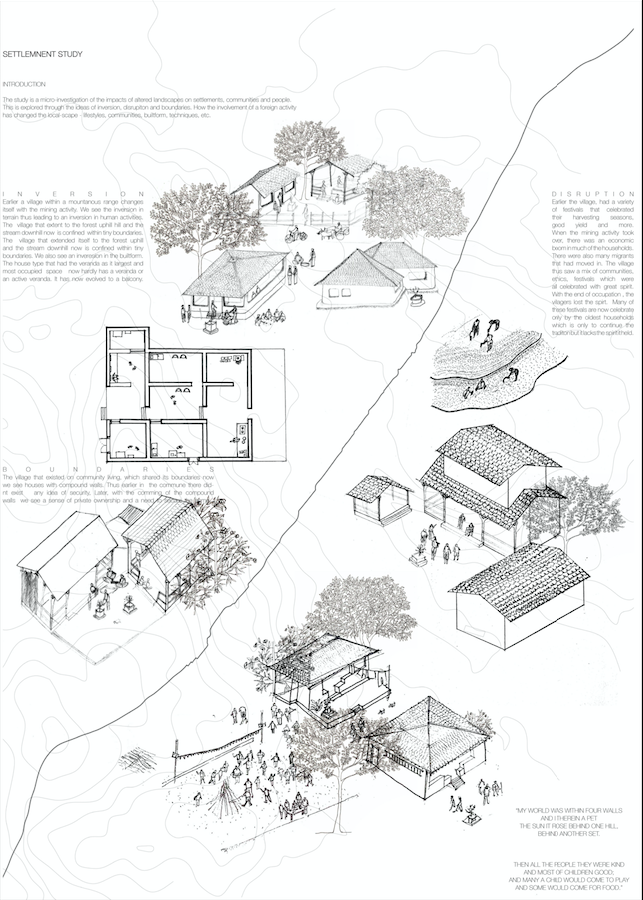

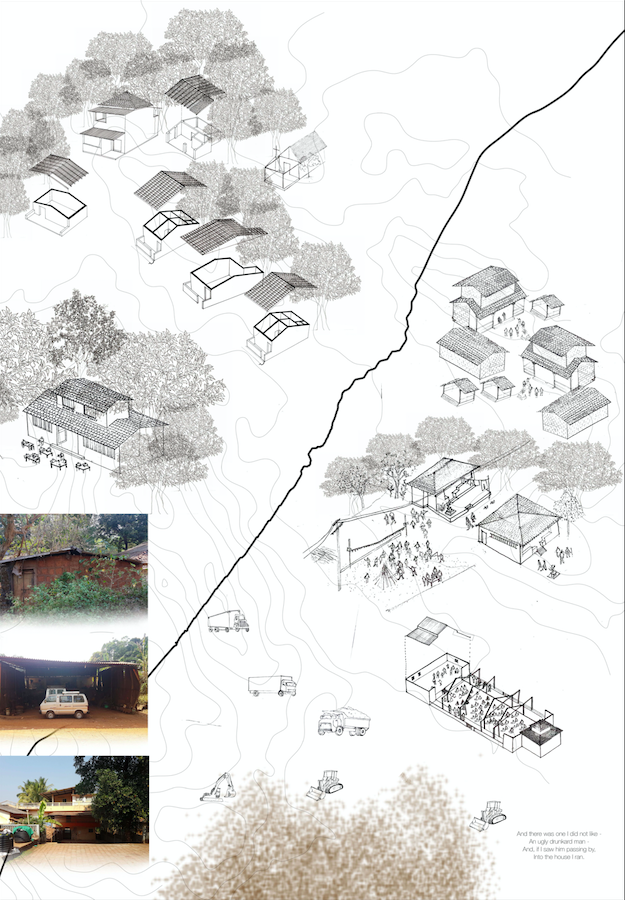

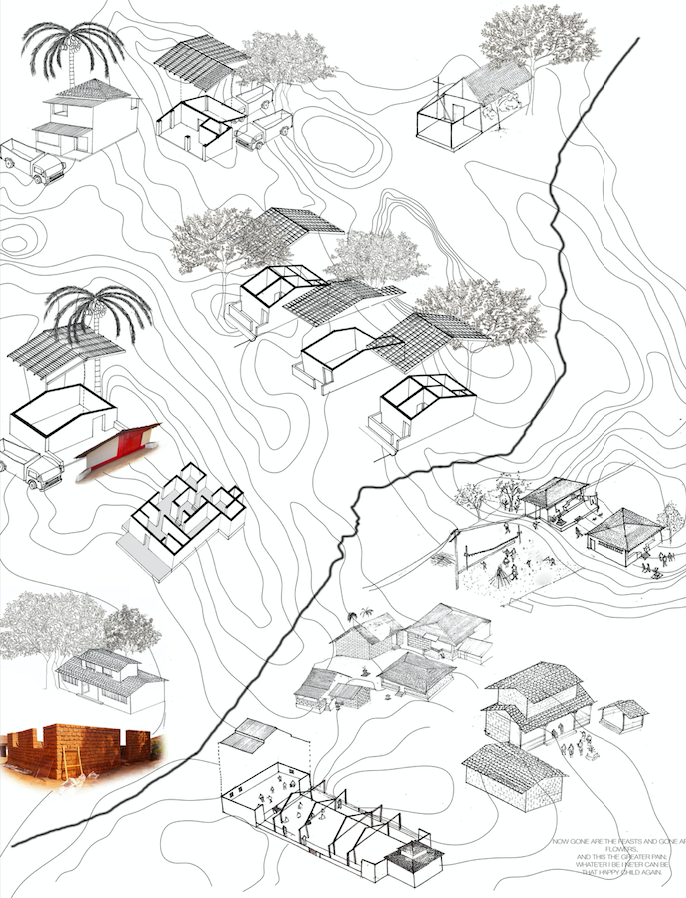







Comments